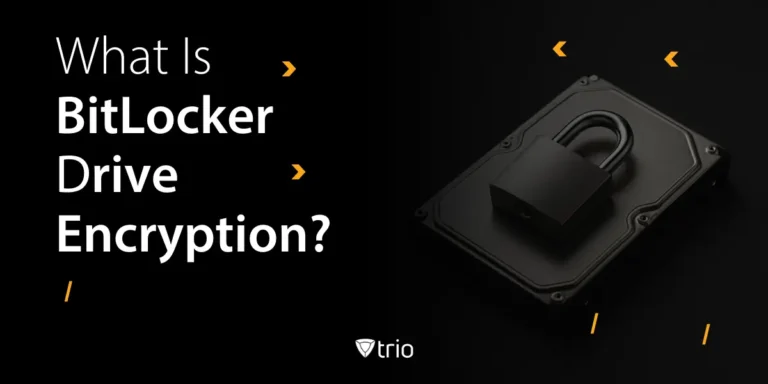In today’s fast-moving digital environment, mobile devices are central to business operations. With the rising number of security vulnerabilities and frequent software updates, automated patching has become a critical component of Mobile Device Management (MDM). This blog explores the importance, benefits, and challenges of automated patching, while concluding with how TrioMDM simplifies patch management for modern enterprises.
- Mobile devices are prime targets for cyberattacks if left unpatched.
- Automated patching within MDM ensures timely, consistent, and seamless updates.
- Benefits include compliance, reduced IT workload, minimized downtime, and longer device life.
- TrioMDM offers policy-driven patch automation, real-time compliance tracking, and zero-touch rollouts.
- Case studies show significant reductions in vulnerability windows and IT overhead.
The Growing Threat Landscape
Mobile devices are constantly targeted by cyber attackers, especially when left unpatched. Threats evolve quickly, and organizations that delay patching expose themselves to unnecessary risks and breaches. A well-structured patching strategy ensures devices remain protected while reducing the time window that attackers can exploit.
- Over 60% of breaches exploit vulnerabilities that already had fixes available but were not applied in time.
- Automated patching minimizes this delay by rolling out updates quickly and consistently.
- Strong patch automation strengthens defenses across all devices and reduces the workload on IT teams.
- Organizations adopting automated patching report fewer incidents, stronger compliance scores, and improved trust from stakeholders.
What Is Automated Patching?
Automated patching means updates—OS, apps, and firmware—are applied without manual intervention. This allows IT teams to centrally manage devices across large fleets and ensure uniform updates, strengthening security and compliance. The process secures endpoints, reduces human error, and keeps organizations audit-ready. Automated patching also brings predictability and confidence to IT operations by removing uncertainty around update schedules and minimizing risk windows.
- Ensures consistent coverage across every device, regardless of location.
- Reduces risks associated with delayed or missed updates by applying them promptly.
- Builds confidence among IT teams and business stakeholders through reliable update cycles.
- Provides a scalable, future-proof method for managing thousands of devices efficiently.
- Helps organizations achieve compliance without the manual burden of tracking every patch.
Why Manual Patching Fails
Manual patching is inefficient and unmanageable at scale, often stretching IT resources thin. Teams face delays, human errors, and mounting stress when applying updates manually, leading to inconsistent coverage and a weaker security posture. As the number of devices grows, manual patching quickly becomes unsustainable, leaving organizations exposed to preventable risks. Automated systems eliminate these issues by ensuring faster, consistent updates without overwhelming staff.
- Delays and inconsistencies create exploitable security gaps that attackers can exploit.
- Manual processes demand more time, staff, and oversight, driving up costs.
- Automation ensures faster coverage and reduces reliance on repetitive manual effort.
- A scalable automated approach keeps devices secure while freeing IT to focus on strategic projects.
Compliance and Regulatory Pressures
Industries such as healthcare, banking, and government operate under strict compliance frameworks like HIPAA, NIST, PCI DSS, and GDPR. Missing patch deadlines not only risks non-compliance but also leads to potential legal fines, reputational harm, and loss of stakeholder confidence. Automated patching acts as a safeguard by embedding compliance into daily operations, ensuring organizations stay aligned with regulatory expectations.
- Provides detailed logs and reports to simplify audits and inspections.
- Ensures organizations consistently meet patching timelines required by industry standards.
- Builds and strengthens trust with auditors, regulators, and customers through transparency.
- Reduces the risk of penalties while maintaining continuous operational security.
- Demonstrates a proactive security posture that protects both data and brand reputation.
Minimizing Downtime
Downtime directly impacts productivity and revenue, often costing organizations significant losses. Automated patching reduces disruption by delivering updates during non-peak hours, often silently, so employees continue working without interruptions or distractions. This proactive approach allows businesses to stay secure without negatively affecting workflows. Silent patching ensures minimal involvement from end users while IT teams remain confident that all systems are up to date and functioning properly.
- Schedule updates outside business hours to reduce workplace interruptions.
- Silent installs and automatic restarts minimize disruption and keep systems secure.
- Employees continue working productively without facing delays caused by manual updates.
- IT teams benefit from reliable uptime and smoother operations.
- Security and efficiency are improved simultaneously, creating balance between protection and performance.
Patching Across Platforms
Enterprises operate mixed environments—Android, iOS, Windows, and macOS—making patching complex if handled separately. Automated patching provides unified coverage, ensuring all devices, regardless of platform, receive updates consistently and securely. By integrating cross-platform patching into a single MDM console, organizations reduce complexity, strengthen compliance, and ensure operational continuity across diverse fleets. This not only improves security but also streamlines IT management for businesses with rapidly expanding device ecosystems.
- Cross-platform patching eliminates silos and ensures all platforms are updated together.
- Unified MDM consoles simplify operations and reduce administrative overhead.
- Streamlined processes save time, reduce costs, and minimize human error.
- Provides full visibility of patch status across Android, iOS, Windows, and macOS.
- Enhances security and stability while enabling IT to manage large, diverse fleets effectively.
Reducing IT Overhead
Automation significantly lowers IT workload by eliminating repetitive manual patching tasks. By automating updates, IT teams save countless hours and redirect their efforts toward higher-value projects that support organizational growth. Automated patching reduces the stress of constantly monitoring vulnerabilities and ensures devices remain secure without heavy manual oversight. This shift not only enhances efficiency but also lowers costs, strengthens morale, and empowers IT teams to focus on innovation.
- Replaces resource-intensive manual processes with streamlined automation.
- Cuts operational costs associated with manual oversight and repetitive work.
- Frees IT staff for innovation, digital transformation, and strategic initiatives.
- Improves productivity by reducing time spent on routine maintenance.
- Enhances IT team effectiveness while securing the organization’s entire device fleet.
Closing Zero-Day Vulnerability Gaps
Zero-day vulnerabilities demand instant action because attackers actively exploit flaws as soon as they are discovered. Automated patching is critical in closing these gaps quickly by applying vendor fixes immediately, reducing risks from high-severity threats. With automation, IT teams can roll out patches across the fleet in record time, ensuring minimal exposure and maximum resilience.
- Patches are typically applied within hours instead of waiting days or weeks.
- Rapid action minimizes opportunities for attackers to exploit unpatched devices.
- Strengthens the organization’s overall resilience against emerging and unknown threats.
- Provides confidence that even the newest vulnerabilities are handled swiftly and effectively.
- Builds a proactive security posture where organizations stay ahead of cyber risks.
Enhancing Device Lifespan
Patches not only protect devices but also optimize performance over time. Automated updates improve system stability, extend device usability, and delay costly refresh cycles that organizations would otherwise face. Regular patching ensures devices operate at peak efficiency, providing a better user experience and reducing the need for frequent replacements. This not only saves money but also enhances sustainability by keeping hardware functional for longer periods.
- Boosts device performance, stability, and efficiency for end users.
- Extends the lifespan of hardware assets, reducing refresh frequency.
- Reduces total cost of ownership while improving ROI.
- Minimizes unplanned downtime caused by outdated firmware or OS issues.
- Supports sustainability goals by decreasing electronic waste from premature device disposal.
Reporting and Audit Readiness
Audit readiness depends on documented proof of compliance, which requires accuracy, consistency, and visibility. Automated patching generates detailed logs and interactive dashboards that IT teams can use for transparent reporting. These records not only demonstrate that devices are updated on time but also provide auditors with clear evidence that the organization follows best practices. Strong reporting builds confidence with regulators and management, ensuring businesses can withstand scrutiny while maintaining trust.
- Offers real-time visibility of patch status across every device and platform.
- Provides clear, verifiable evidence for compliance audits and inspections.
- Builds organizational transparency, accountability, and confidence in patch management.
- Reduces the risk of penalties by ensuring proof of timely action.
- Supports proactive compliance by simplifying audit preparation and documentation.
Challenges in Automated Patching
While automation is powerful, organizations must handle potential issues such as patch compatibility, failed rollouts, or user awareness. Automated patching can sometimes introduce unexpected challenges if not carefully managed, so IT leaders must create strategies that combine efficiency with safety. A thoughtful balance between automation and manual oversight ensures systems remain secure and stable.
- Some patches require staged rollouts or rollback plans to mitigate risks.
- Clear communication to end users is critical for awareness and smooth adoption.
- Strong MDM tools balance automation with flexibility, transparency, and rollback support.
- Regular testing in controlled groups prevents widespread issues before full deployment.
- Combining automation with governance policies ensures consistent success and long-term reliability.
Use Cases of Automated Patching in MDM
Automated patching applies across industries and use cases:
Healthcare – Hospitals and clinics safeguard patient data and maintain HIPAA compliance by ensuring medical staff devices are patched quickly and consistently. This minimizes risks of breaches and protects sensitive health information.
- Financial Services – Banks and insurers meet strict audit standards and ensure real-time protection of financial transactions by automating security updates across trading systems and customer devices.
- Education – Schools and universities prepare student tablets and laptops for secure online exams, digital learning platforms, and classroom apps with minimal IT effort.
- Retail – Automated patching protects point-of-sale systems from vulnerabilities, preventing costly breaches of customer payment data.
- Remote Work – Distributed employees remain compliant and secure without relying on VPNs, as automated updates reach devices wherever they are located.
Case Study: Automated Patching in Action
A healthcare provider managing 2,500 devices struggled with patch delays and failed audits, leading to compliance risks and operational inefficiencies. By adopting automated patching through MDM, the organization achieved measurable improvements across multiple areas.
- Deployment time dropped drastically from 21 days to just 48 hours, closing vulnerability windows faster.
- Compliance scores improved by 35%, helping the provider pass audits confidently and avoid penalties.
- IT workload related to patching decreased by 60%, enabling teams to focus on strategic innovation and patient-centric digital initiatives.
Outcome: stronger security, reduced risks, improved compliance, and greater trust from regulators, auditors, and patients who depend on reliable healthcare systems.
How TrioMDM Handles Automated Patching
TrioMDM makes patch management seamless with automation built for SMBs and enterprises. It transforms patching from a complex, error-prone process into a streamlined, hands-off solution. By combining intelligent automation with real-time oversight, TrioMDM ensures devices stay secure, compliant, and productive without slowing down operations.
- Policy-Based Rules – Configure update policies by OS, device type, or department for flexibility.
- Silent, Zero-Touch Rollouts – Updates apply in the background, eliminating user disruption.
- Real-Time Compliance Dashboards – Track, audit, and prove patch status instantly with detailed logs.
- Rapid Zero-Day Response – Vendor fixes are deployed within minutes to minimize risk.
- Rollback & Staged Testing – Safely test updates before wide release, reducing compatibility issues.
With TrioMDM, patching shifts from a manual burden to a consistent, automated safeguard that improves compliance, strengthens security, and maximizes organizational productivity.
Conclusion
Automated patching is no longer optional—it is essential for protecting modern enterprises against fast-moving cyber threats. By eliminating delays, reducing IT overhead, and ensuring compliance, automation provides both security and efficiency at scale. Organizations that adopt automated patching improve device performance, reduce risks, and enhance trust with regulators and stakeholders. TrioMDM makes this process seamless by combining automation, compliance monitoring, and zero-touch deployment into one platform. With TrioMDM, businesses can transform patching from a time-consuming burden into a reliable, proactive safeguard that strengthens security and supports long-term growth.
Frequently Asked Questions
Automated patching is the process of deploying OS, app, and firmware updates to devices without manual intervention, ensuring security and compliance.
It reduces errors, saves time, ensures consistency across devices, and closes vulnerability gaps faster.
No. Updates are often silent and scheduled during off-hours, minimizing disruption.
It provides logs, audit trails, and timely patching to meet standards like HIPAA, PCI DSS, and GDPR.
Get Ahead of the Curve
Every organization today needs a solution to automate time-consuming tasks and strengthen security.
Without the right tools, manual processes drain resources and leave gaps in protection. Trio MDM is designed to solve this problem, automating key tasks, boosting security, and ensuring compliance with ease.
Don't let inefficiencies hold you back. Learn how Trio MDM can revolutionize your IT operations or request a free trial today!





